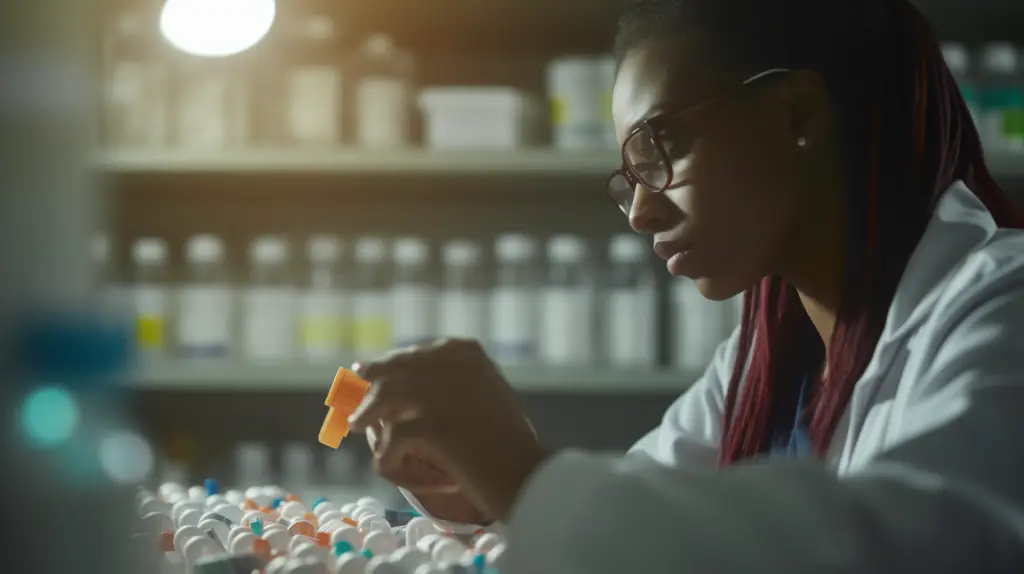In today's constantly changing healthcare industry, it is crucial to prioritize patient safety and comply with industry regulations. One important way to achieve these goals is through thorough healthcare background screening. This article explores the significance of healthcare background checks, the screening process, regulatory requirements, and the importance of continuous monitoring. By the end of this article, you will understand how these checks are essential for safeguarding patient well-being and maintaining compliance.
Healthcare background checks are a multifaceted process that involves meticulously examining an individual's professional and personal history. To truly grasp their significance, it's essential to delve into the technical aspects of these checks and why they are vital for the healthcare industry.
EXPERT INSIGHT: When patients enter a healthcare facility, we trust and hope for their condition to improve. This trust extends deeply into the healthcare system and its professionals. Therefore, background checks become paramount in this industry, ensuring patient safety and compliance at every level. - Emile Garcia, SHRM-SCP, CHRP, CHRBP
The Screening Process
The healthcare screening process is a well-organized and technically advanced set of procedures designed to ensure that every healthcare worker is competent, dependable, and meets the highest standards of patient care. Let's explore the technical intricacies of each step.
Application Review
Healthcare organizations use applicant tracking systems to review candidates' applications.
Applicant Tracking System (ATS) software is designed to scan resumes and job applications for specific keywords, qualifications, and experience. It can quickly identify discrepancies or omissions in the candidate's application, such as gaps in employment history or missing certifications. However, the key lies in configuring the ATS to match the organization's specific requirements and conducting a nuanced review to avoid false negative results.
Criminal Background Check
One of the most critical technical aspects of healthcare screening is the criminal background check. This step involves accessing many databases to uncover past criminal convictions, pending charges, or issues related to the candidate's legal history.
Healthcare organizations frequently collaborate with specialized background screening companies that have access to local, state, and federal databases. These databases are updated frequently, making real-time access critical. The technical challenge lies in ensuring the accuracy of the data retrieved to ensure that it is current and relevant.
Compliance with federal and state laws, including the Fair Credit Reporting Act (FCRA) and the Health Insurance Portability and Accountability Act (HIPAA), is crucial. Maintaining the security and confidentiality of sensitive information is a mandatory technical requirement.
Education Verification
The technical intricacy of education verification involves contacting educational institutions to confirm the authenticity of the candidate's claimed degrees, certifications, and licenses. This process requires precise communication with institutions and often includes:
- Transcript Analysis: Examining academic transcripts for discrepancies or signs of fraud.
- Verification Codes: Some institutions provide verification codes that can be cross-referenced.
- Data Privacy: Adhering to data protection regulations when requesting and handling educational records.
Verification of international qualifications or institutions with strict data protection regulations can be challenging for healthcare organizations to navigate.
Accurate education verification is a pivotal aspect of the screening process in healthcare. Ensuring that candidates possess the qualifications they claim is crucial for patient safety. The Belford University Diploma Mill case illuminates the challenges and importance of verifying education credentials, particularly when dealing with deceptive institutions. Source
Reference Checks
Checking references can be complicated, as it requires effective communication and validation of the information provided. For healthcare organizations, it is crucial to ask precise questions to obtain relevant insights from previous employers and professional references.
Cross-referencing the information received from references with the candidate's claims is crucial. This technical step ensures that feedback aligns with the candidate's work history and skills. Detailed record-keeping is essential to maintain compliance with legal and privacy requirements.

Addressing Criminal Backgrounds
Healthcare background screening is a critical process that demands careful consideration when addressing criminal backgrounds due to its technical complexity. This step involves delving into an individual's legal history to identify past criminal convictions or pending charges that could risk patient safety. Here, we'll explore the technical intricacies of conducting criminal background checks in the healthcare industry.
Utilizing Advanced Background Check Software
Healthcare employers leverage advanced background check software to uncover criminal histories accurately. These platforms incorporate machine learning algorithms and artificial intelligence to identify potential matches within extensive criminal databases. They use complex matching criteria to reduce false positives and ensure precise results.
Compliance with Ban the Box Laws
Healthcare organizations must understand "Ban the Box" laws to navigate the legal complexities of criminal background checks. These laws restrict inquiries into an applicant's criminal history at certain stages of the hiring process. Organizations must integrate specialized software into their applicant tracking systems to comply with these laws. This will ensure that criminal history inquiries are made at the appropriate times.
Employee Background Screening
Performing employee background screening in the healthcare industry is a critical and complex process that requires accuracy and attention to detail. It's crucial to verify the qualifications and trustworthiness of healthcare professionals for the safety of patients and to comply with regulations. In this discussion, we will explore the technical details of employee background screening in the healthcare sector.
Integration with Licensure Databases
Healthcare organizations conduct employee background screening, which involves confirming the professional licenses and certifications held by the candidates. This process requires integration with state licensure databases to ensure the candidate's license status is validated in real time. Healthcare organizations utilize specialized software to verify licenses, which enables them to stay informed about any changes in licensing.
Advanced Automated Reference Check Systems
Advanced automated reference check systems utilize natural language processing and sentiment analysis in employee background screening. These tools delve into the qualitative aspects of a candidate's references, extracting nuanced data on work performance, teamwork, and ethics. They also cross-reference this data with standardized industry benchmarks.
Compliance with Regulations
Navigating healthcare background check regulations is a technically demanding aspect of the screening process. The healthcare industry is subject to stringent legal frameworks, and compliance with these regulations is paramount. Let's delve into the technical intricacies of maintaining compliance with regulatory requirements in healthcare background screening.
Electronic Records Management
Electronic records management systems are necessary for complying with healthcare background check regulations. These systems ensure secure storage and retrieval of background check records while maintaining data security and privacy protocols. Compliance is ensured through regular audits and encryption to protect sensitive data.
Customizable Compliance Reporting
Healthcare organizations employ customizable compliance reporting tools that adapt to changing regulations. These tools generate detailed reports demonstrating adherence to background check laws and regulations specific to the healthcare industry. They enable organizations to monitor compliance at both the federal and state levels, ensuring ongoing conformity.

Continuous Monitoring
Continuous monitoring is an automated system that regularly checks for employee background updates.
Real-Time Data Integration
Real-time data integration from multiple sources, including criminal databases, licensure records, and social media, enables healthcare organizations to detect changes or alerts as they happen with the help of API-driven solutions.
Automated Trigger Systems
Automated trigger systems are deployed to respond swiftly to adverse changes in an employee's background. Employing predefined rules and thresholds, these systems alert HR personnel when specific conditions are met. This proactive approach ensures that healthcare organizations remain vigilant in maintaining ongoing trustworthiness among their staff.
Continuous monitoring is crucial for healthcare background screening. Real-time updates help identify risks in the workforce proactively. Johns Hopkins Hospital used continuous monitoring with real-time updates to identify an employee with a criminal history, protecting patients from potential harm.
Conclusion
Background screening is critical for patient safety and regulatory compliance in healthcare. It includes criminal history, education verification, and reference checks to maintain a trustworthy workforce. By navigating regulations and implementing continuous monitoring, providers ensure the highest quality of care.
Still have questions?
Get in touch with our team today for a personalized demo and discover how our tailored volume pricing and packages can drive results for your business!
How useful was this page?*
Note: your comments are anonymous. We use them to improve the website. Do not include any personal details.
Visit our FCRA Compliance Tool or leave a message here if you need a response.
From the blog Explore the GCheck Content Hub

FACIS Background Check: 2026 Healthcare Compliance Guide
18 Dec, 2025 • 20 min read
Food Delivery Driver Background Check: Complete Compliance Guide for Restaurant Operators
17 Dec, 2025 • 17 min read
Texas Education Background Checks: 2026 TEA Compliance Guide for Schools & Districts
17 Dec, 2025 • 23 min readThe information provided in this article is for general informational and educational purposes only and should not be construed as legal advice or a substitute for consultation with qualified legal counsel. While we strive to ensure accuracy, employment screening laws and regulations—including but not limited to the Fair Credit Reporting Act (FCRA), Equal Employment Opportunity Commission (EEOC) guidelines, state and local ban-the-box laws, industry-specific requirements, and other applicable federal, state, and local statutes—are subject to frequent changes, varying interpretations, and jurisdiction-specific applications that may affect their implementation in your organization. Employers and screening decision-makers are solely responsible for ensuring their background check policies, procedures, and practices comply with all applicable laws and regulations relevant to their specific industry, location, and circumstances. We strongly recommend consulting with qualified employment law attorneys and compliance professionals before making hiring, tenant screening, or other decisions based on background check information.


